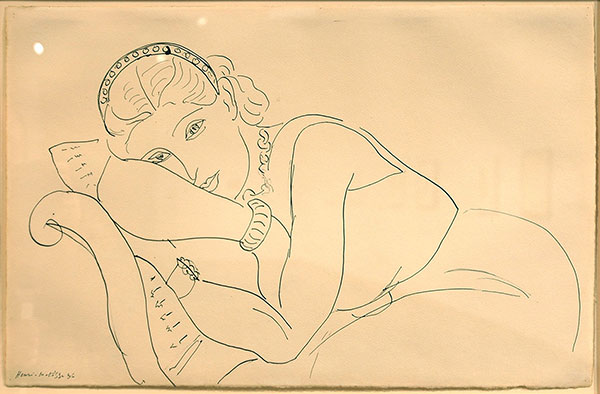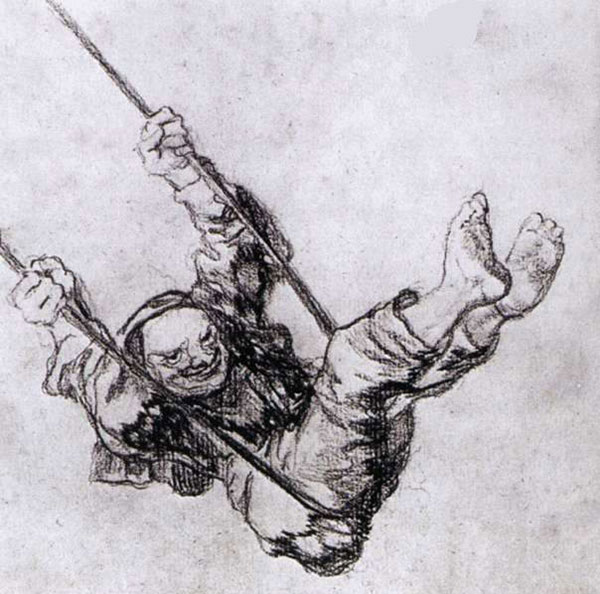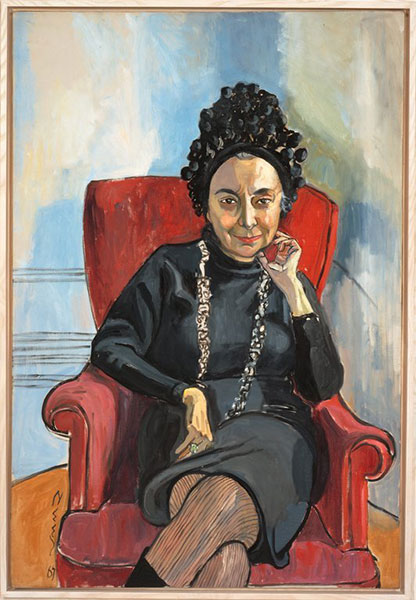
Bambi’s First Year, 2009(?), by Thomas Kinkade
Thomas Kinkade, “Painter of Light (TM)” passed away earlier this month. His psychedelically colorful fantasy landscapes are too sugary for my taste, but he’s a fascinating cultural figure of our time. It strikes me that his technically accomplished, rather surrealistic style would have been embraced by the contemporary art world if he had presented it as ironic rather than earnest, and if he had sold exclusively to elite collectors instead of marketing to the masses. Can’t you just imagine the painting above in a Chelsea gallery or in the pages of Juxtapoz magazine? But he made the statement he wanted to make, and made a ton of money doing so.
Don’t worry – I’m not going to go on about Kinkade, nor about the ironies of the Art World. This post is inspired by Kinkade’s trademarked epithet, “Painter of Light”. The post is a selection of great Western paintings of the last four centuries that beautifully capture effects of light. They’re presented here in chronological order. Any art history fan reading this will surely think of great painters and works I’ve left out, and I invite you to share your favorites in the comments section.
The term of art for drawing or painting emphasizing contrasts of light and shadow is the beautiful Italian word “chiaroscuro“, and there is no better example of the technique than Caravaggio. He achieved an almost photographic feeling of realism and presence using dramatic, high-contrast light. Where most artists of his time portrayed Biblical figures as idealized types in standardized poses, Caravaggio shows them as individuals, with distinctive features, physical flaws, and very human gestures and attitudes. The chiaroscuro technique is so vivid you feel like you could touch the people in his paintings.

The Supper at Emmaus, 1606, by Caravaggio
Around the same time, El Greco was moving away from realism, with figures distorted in ways that suggest movement or emotion. Was El Greco consciously experimenting with modes of expression hundreds of years ahead of their time, or was he a bit crazy? Either way, the composition below is charged with energy. The light is not realistic as in the Caravaggio – it strikes different figures from different directions, and sometimes seems to be a glow from within. But the sense of light is powerful here anyway, as the turbulent sky, the satiny fabrics, and the serpentine bodies and limbs of the figures all seem to crackle with the electricity of a storm about to burst.

The Vision of St. John (Opening of the Fifth Seal), 1614, by El Greco
El Greco worked in Spain but came from Crete, and may have been influenced by the highly stylized traditions of Eastern Orthodox art. He was certainly an outlier in his era, as a main movement in the 17th century was towards more realism. Many artists of the time specialized in illusionistic rendering of subtle light effects, as in this candlelit scene by van Honthorst. I love the way the warm candlelight glows on the face and breast of the female figure, while the male in the foreground is just a black silhouette with a rim of light suggesting his features.

The Matchmaker, 1625, by Gerrit van Honthorst
Georges de La Tour did many paintings with very convincing candlelight or lamplight effects. His style is serene, his compositions spare and elegant. The flame below is so beautifully rendered that it actually seems to be emitting light.

Magdalen with the Smoking Flame, 1640, by Georges de La Tour
Many of Vermeer’s paintings show interior scenes lit by daylight coming laterally through windows. The light effects are observed with great accuracy, including subtleties like the warm-toned light reflected from the table top onto the wall beneath the window, and the way the window light reveals the texture of the wall and map behind the young woman.

Officer and Laughing Girl, 1655, by Johannes Vermeer
Goya’s paintings of terror and madness often use harsh, dramatic lighting. This scene of abduction by flying witches looks like a night scene illuminated by a spotlight or a bolt of lightning from above. The contrasty lighting leaves many details in darkness – the deep shadows where horrors lurk.

Flying Witches (Vuelo de Brujas), 1797, by Francisco Goya
In Blake’s depiction of necromancy, the conjured spirit of the prophet Samuel shines as a column of light in the darkness, casting his fearsome glow on the crouching figures of King Saul and the Witch of Endor.

The Witch of Endor Raising the Spirit of Samuel, 1800, by William Blake
The painting below may be a self-portrait by Marie-Denise Villers. I’ve found very few images of other works by this painter, but this piece is a wonderful depiction of the penetrating gaze of an artist. The window-light coming from behind the artist makes her golden ringlets and white gown glow, and the light reflects from the drawing paper to softly bathe her face from below – a very unusual choice for a portrait, but here the effect highlights both her youthful beauty and her eyes looking into your depths. (This painting has always been one of my favorites at the Metropolitan Museum.)

Young Woman Drawing, 1801, by Marie-Denise Villers
Ingres’ painting shows a Scottish bard dreaming of the characters of Celtic myth, bathed in a mysterious beam of light that seems to glow from inside the circle of figures.

The Dream of Ossian, 1813, by Jean Auguste Dominique Ingres
Friedrich specialized in romantic landscapes where human figures are dwarfed by mysterious environments that seem filled with spirits. All of his paintings have wonderfully rendered effects of light and air.

Man and Woman Contemplating the Moon, c. 1830, by Caspar David Friedrich
In this masterful depiction of a glowing golden sunset, also by Friedrich, the figures are bathed in a diffuse backlight and the skylight both reflects off the surface of the water (especially in the foreground) and shines through its translucency (especially in the distance).

The Stages of Life, 1835, by Caspar David Friedrich
Turner took the study of light and its interaction with air and water, smoke and rain, in a radically abstract direction. This swirling composition can be appreciated as pure paint and gesture like abstract expressionism, but the image of the boat, barely visible in the tempest, gives it even more depth and motion.

Snow Storm – Steam Boat off a Harbor’s Mouth Making Signals in Shallow Water, and Going by the Lead. The Author was in this Storm on the Night the Ariel Left Harwick, 1842, by J. M. W. Turner
Bierstadt’s grand landscapes often feature special lighting effects. In this one I like the interaction of the red firelight and the greenish glow of the full moon.

Oregon Trail, 1863, by Albert Bierstadt
Monet’s entire long career is a study of natural light in all its variations. The details don’t matter in the example below, but the differences between the shaded foreground and the sunlit background, and how the colors and tones of all these areas are fragmented in reflections on the water surface are both vivid and subtle.

La Grenouillere, 1869, by Claude Monet
Caillebotte was also a great observer of light. Look at how the light gives form to the foreshortened bare backs of the workers, and how the light reflects differently off the glossy and non-glossy parts of the floor.

The Floor Strippers, 1875, by Gustave Caillebotte
Degas often depicted subtle effects of lighting through variations in color rather than just variations in value. Some of the shadows on the bather’s body have a greenish tone, while others have a reddish tinge. Even though the detail and chiaroscuro are fairly minimal here, the body has a great feeling of three-dimensional presence.

The Tub, 1886, by Edgar Degas
Sargent’s watercolors are even looser with the detail, but wonderfully capture the qualities of light, as in this scene of a mother and baby, their faces obscured in the shade of a tent while their bodies are in sunlight.

Bedouin Mother, 1905, by John Singer Sargent
Monet’s later work uses much more vivid colors than his early work. They blend in the eye, in a way that looks realistic from a distance.

The Grand Canal, 1908, by Claude Monet
Bonnard was always interested in color effects. Some of his later works dispense with light-dark contrasts so much that they’re almost unreadable in black-and-white reproductions. This one, though, still has chiaroscuro. The figure is deeply shadowed, but she’s surrounded by light and color.

Model in Backlight, 1908, by Pierre Bonnard
Here’s another Sargent. With minimal detail, he gives us the effects of sunlight dappled through leaves and skipping off the surface of water.

The Bathers, 1917, by John Singer Sargent
This is the only purely nonobjective piece in this post. Paul Klee brought a deep study of color and light to his playful abstractions, which often suggest an inner glow, or the effects of light passing through translucent colored glass.

Eros, 1923, by Paul Klee
Ivan Albright used chiaroscuro not to show the form of his figures, but to show the texture. The effect is grotesque and cruel, like a contrasty photograph that reveals every wrinkle and pore, but it also has a powerful luminous effect.

Into the World There Came a Soul Called Ida, 1930, by Ivan Albright
Hopper was famous for his studies of light and shadow, both sunlight and nighttime artificial light effects. His treatment of light always seems to create an impression of empty space around his subjects.

Summer Evening, 1947, by Edward Hopper
Here George Tooker places some of his figures in deep shade under the Coney Island boardwalk, and other figures in full sun. Notice the central reclining male figure in the dark foreground, with one leg in the sun. The shadowy figures also help make the blue sky look luminous.

Coney Island, 1948, by George Tooker
In “The Waiting Room:, Tooker depicts a very different light atmosphere, the sickly fluorescent overhead glow permeating a dehumanizing institutional space. These two pictures embody polar extremes of the modern urban experience, and the quality of the light in each piece defines its spirit.

The Waiting Room, 1957, by George Tooker
I’ll conclude with a magnificent chiaroscuro nude by Andrew Wyeth. The light and shadow make the figure tangible. The woman’s face turns into the darkness, which is mysterious space. A photograph of this scene, exposed to keep detail in the sunlit areas, might look like this, with deep black shadows all around, but the human eye would naturally see detail in the darker areas. The artist has chosen to surround his subject in pitch black, all the brighter to make the light.

Lovers, 1981, by Andrew Wyeth
All of the illustrations in this post were found on the web. Clicking on the images will take you to the sites where I found them, and in many cases to larger versions of the pictures.



















































































































































